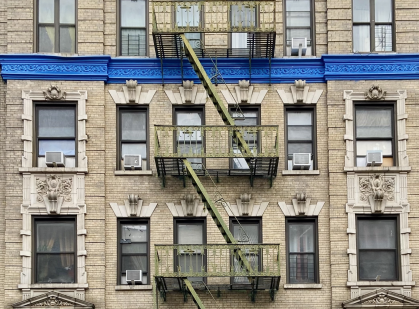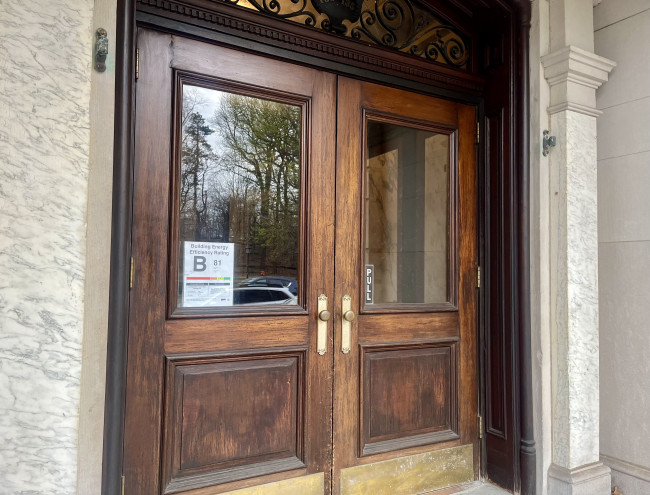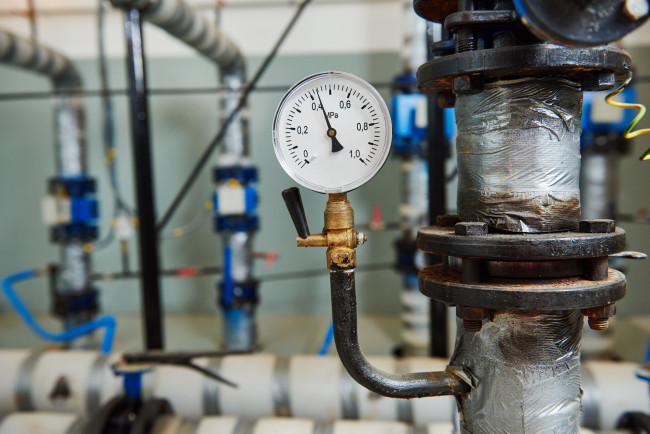- Add energy efficiency requirements to your building's alteration agreement
- Seal air leaks around AC units and elevator shaft vents on the roof

Conversations with owners and shareholders about energy-efficiency initiatives may increase their understanding of regulatory goals and their buy-in for the more expensive projects.
MDoculus/iStock
Most co-op and condo buildings have to meet New York City’s new energy emission requirements and make the switch from fossil fuel heating and cooling systems to electric alternatives. If you are on your building's board, this can feel like an overwhelming challenge—but there are some low- or even zero-cost changes your building can implement to start you on your path towards compliance.
Many boards are “gobsmacked” by the requirements of Local Law 97, says Thomas M. Ostrowski, co-op board president at 172 East 4th St., where emission penalties have been eliminated until at least 2034 thanks to a series of upgrades put in place over the last decade. Ostrowski recently offered emission reduction advice to boards at an event hosted by The Building Energy Exchange (BeEx), an organization that promotes energy-efficient technologies.
Low-cost tools available to boards include changing the alteration agreement to ensure renovations are done to the highest energy-efficient standards; making sure in-window AC units are tightly installed; sealing rooftop elevator shaft vents; and the most obvious one—switching out incandescent light bulbs.
The city will consider the good-faith efforts of owners and boards who attempt to curb emissions when penalties take effect in 2025. Changing your alteration agreement won’t make your building compliant, but having conversations with residents about these initiatives may increase their understanding of regulatory goals and their buy-in for the more expensive projects.
1. Put energy upgrades in the alteration agreement
Changes to your building’s alteration agreement are a way of getting ahead of energy consumption by residents in their apartments, says Jessica Tusing, director of compliance at the property management firm Argo Real Estate.
Tusing hosted the BeEx panel discussion and her first recommendation is that boards change their alteration agreements to mandate replacing all appliances including the stove, refrigerator, AC units, and dishwasher to Energy Star appliances when there’s a renovation. So anytime someone makes substantial upgrades to their apartment, the building sees an efficiency improvement.
“The appliances made now are so much more efficient than even a few years ago,” she says.
The alteration agreement can also mandate the use of low-flow fixtures. “If there’s less hot water coming out of your shower and your faucet, then there’s less hot water being generated by the boiler,” Tusing says.
If walls are opened, consider making owners or shareholders insulate their hot water pipes as part of their agreement with the building. You may also want to add a requirement about upgrading the apartment’s electrical load, although this will add significant expense to a renovation. Increasing the electric load can cost from $15,000 to $30,000 for the apartment owner.
Tusing is a member of the Residential Management Council at the Real Estate Board of New York and is pushing for the organization to update their boilerplate alteration agreements to mandate a variety of energy efficient and low-emission upgrades. “Otherwise you have to go to your attorney to get these documents updated,” she says. However, attorney Dean Roberts, a partner at Norris McLaughlin, says the legal cost for this is “minimal.”
While far from low-cost, a Fifth Avenue apartment building in Manhattan recently invested $250,000 to create a cable route for everyone to upgrade the electrical capacity in their apartments if they wanted to—either now or in the future. If owners end up taking advantage of the work, the building recoups the investment by charging $25,000 to use the upgraded electric capability that's been established.
Roberts has seen this done in other buildings and recommends these types of upgrades. In one situation, he says, “three out of eight owners paid for the building-wide upgrade but if anyone wants to join, they have to pay one eighth of the fee” to access the increased electric load for their apartment.
2. Install LED lighting
Swapping out incandescent and halogen bulbs for LED ones in the building’s common areas is essential. If this suggestion sounds old, you'd be surprised how many buildings still need to do this, Tusing says. From 2025 all common areas in residential buildings greater than 25,000 square feet need to upgrade their lighting to meet the city’s Energy Conservation Code.
Residents can be encouraged to make similar upgrades in their apartments. Con Edison offers incentives to switch out aging equipment as well as free LEDs and low-flow devices to eligible residents.
3. Make sure in-window AC units don’t leak air
According to the Urban Green Council, the average AC unit leaks as much air as a six-inch-square hole. AC units themselves account for 1 percent of greenhouse gas emissions in NYC. “Fix those, put AC units in insulated panels, get your windows to fit around them so they are not leaking—that is huge,” says architect Laurie Kerr, who is also the president of LK Policy Lab, and participated in the BeEx panel.
Kerr says her NYC building has eliminated emission penalties until at least 2034. The building replaced windows and she says making sure in-window AC units were a “tight fit” made a big impact.
The board can set whatever standard they want on the requirements for AC units, Roberts says. The only caveat is that it would need to be universally applied to all apartments. “The bylaws and the proprietary lease give the co-op pretty broad rights to set these things,” he says. This would allow your board to mandate the most energy efficient and insulated in-window AC units.
4. Seal elevator shaft vents on the roof
In other data, researchers with the Urban Green Council found apartment owners spend an average of $3,400 each year on heat that escapes through the roof. For taller buildings, the annual cost can be well over $20,000. In the report, following a 2014 change to the NYC building code on elevator shaft vents, the shafts in tall residential buildings are identified as the biggest source of roof air leakage.
The solution is to reduce air loss through elevator shafts by covering two-thirds of the vent area with glass. The estimated cost for this is about $500 to $2,000 per building.
Another option to prevent heat loss through the elevator shaft to the roof is to install a mechanical damper. This allows the vent opening to be fully closed and only open if smoke or power loss are detected. This requires the work of a qualified engineer and the cost per building is about $5,000 to $15,000.
According to the Department of Buildings, from 2022 elevator venting is no longer required under code.
5. Do an energy audit
An energy audit involves a comprehensive look of the building to assess energy efficiency, including mechanical systems, windows, light fixtures, crawl-spaces, and common areas. In many cases, they are subsidized when scheduled with local contractors partnering with the city-sponsored NYC Accelerator. (This still might mean a cost of $15,000 to $20,000 depending on the size and complexity of your building.)
Based on the results you will receive recommendations on how to reduce emissions and conserve energy. Suggestions will typically include switching out systems fueled by oil and gas but may also suggest replacing windows or adding insulation to better conserve energy.
There's a good chance an energy audit will qualify as a good faith effort by the Department of Buildings when penalties are calculated if your building is over the emission requirements. These guidelines are yet to be published but expected in the next few months.
6. Host a town hall to educate residents
To get the buy-in of residents, Kerr suggests helping residents—including members of the board—visualize their decline in carbon emissions. "Boards have a better understanding with graphics," she says.
Charting costs, savings, and energy reduction can be empowering for residents.
"Every annual meeting, talk to your residents about energy," Tusing says.
If your building is over 50,000 square feet, you are required to have a building study carried out by an energy engineer under Local Law 87. Ask them to speak at a town hall event where they can explain to owners and shareholders what's required.
“Getting residents involved with doing their part is a great step in the right direction,” says Tina Larsson, co-founder of the co-op and condo consultancy firm, The Folson Group.
For smaller buildings, see if the energy services manager who files your benchmarking data will talk to residents about the process. Benchmarking and Local Law 97 are different but related. The former identifies energy use, the latter caps energy emissions.
"There will always be people who don't do anything but the more you educate, the more successful you are going to be," Tusing says.
You Might Also Like
Sign Up for our Boards & Buildings Newsletter (Coming Soon!)
Thank you for your interest in our newsletter. You have been successfully added to our mailing list and will receive it when it becomes available.






















